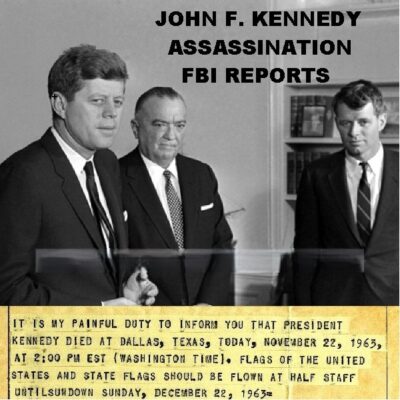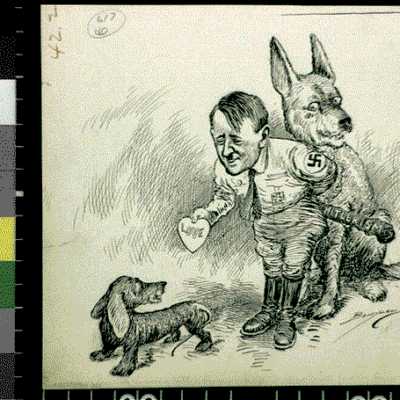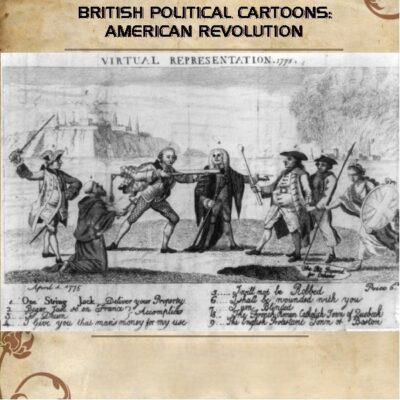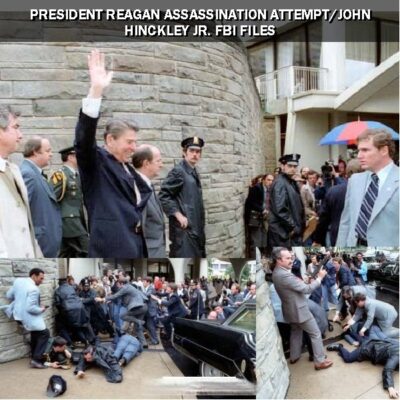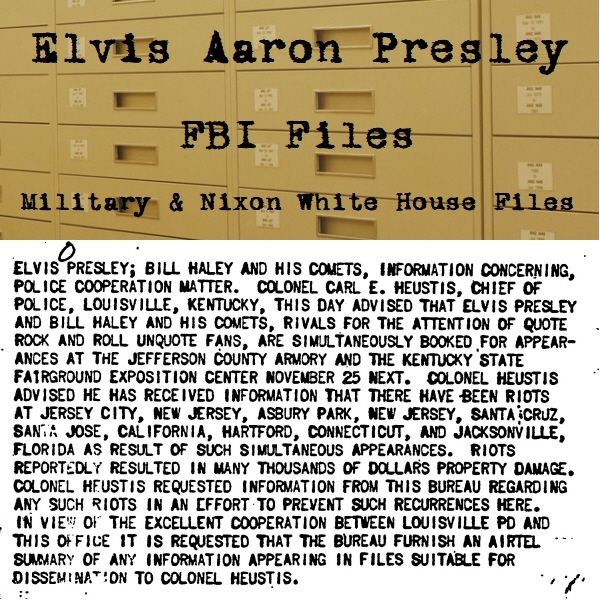
Description
Elvis Presley: A Life and Legacy Timeline
Before 1933:
- Prior to 1939: The land that would become Graceland had been in the family of Ruth Brown Moore for almost 100 years, inherited from her grandfather, Stephen C. Toof, through his daughter Grace (who gave the property its name).
1930s
- 1933: Elvis Aaron Presley is born.
- 1939: Ruth Brown Moore and Dr. Thomas D. Moore build a two-story Classical Revival residence and outbuildings on their land in Memphis, Tennessee, which later becomes Graceland. The house is designed to accommodate musical events for their daughter, Ruth Marie.
1950s
- January 8, 1953 (around his 18th birthday): Elvis Presley registers with the Selective Service System. The Korean War is still ongoing.
- July 27, 1953: An armistice is signed, ending the Korean War.
- 1956-1957 (Pivotal Period for Elvis): Elvis Presley resides in a specific house (later designated the Elvis Presley House National Register of Historic Place) that best represents his transformation into the “King of Rock ‘n Roll.” During this time:
- His first RCA single is released.
- He earns his first gold album.
- He makes record-shattering initial television appearances.
- His first movie is released.
- The FBI begins receiving letters from the public commenting on the alleged immorality of his performances and concerns from law enforcement about his concerts.
- The FBI also starts documenting extortion attempts targeting Presley.
- 1957: Elvis Presley receives a draft deferment while filming the motion picture King Creole.
- January 1957-March 1960: Elvis Presley’s military medical records are maintained.
- March 24, 1958: At the height of his fame, Elvis Presley is inducted into the U.S. Army. He signs an acknowledgment of his 6-year total service obligation (active and reserve).
- April 1958-May 1965: Correspondence related to Elvis Presley’s military service is maintained.
- 1958 (approximate): The U.S. Army’s Public Information Division releases information about Private Elvis Presley’s basic and advanced training, and his approximate assignment date to the 3rd Armored Division in Germany.
- May 29-31, 1959: General Lyman L. Lemnitzer, Vice Chief of Staff of the Army, officially denies special treatment for PFC Presley to return to the United States to attend a disc jockey convention. The Deputy Chief of Staff for Personnel provides policy direction concerning this request.
1960s
- March 1958-December 1964: Elvis Presley’s military service documents are maintained.
- Date Unknown (1960s or 1970s): An FBI document reports that an FBI agent advises J. Edgar Hoover not to meet with Elvis Presley due to Presley’s long hair and “weird clothes.”
- Date Unknown (1960s or 1970s): The FBI chronicles a plot to steal a Lockheed Jetstar private jet from Presley.
- Date Unknown (1960s or 1970s): A disturbed South African fan, who impersonated a dermatologist to give Presley treatments, harasses and blackmails Presley after the treatments end.
1970s
- December 21, 1970 (Morning): Elvis Presley personally delivers a handwritten letter on American Airlines stationery to a security guard at the northwest gate of the White House. He expresses a desire to meet President Nixon, give him a gift, and gain credentials as a federal agent in the war on drugs.
- December 21, 1970 (Morning): A memo is drafted to H. R. Haldeman from White House Aide Dwight Chapin, describing Presley’s unexpected visit and his wish to become a “Federal agent at large” to combat drug problems.
- December 21, 1970 (Morning): After a brief discussion with Presley and his associates (Jerry Schilling and Sonny West), Nixon Aide Egil Krogh is convinced of Presley’s sincerity and potential value. Krogh asks Presley to return to his hotel and await a phone call.
- December 21, 1970 (Morning/Midday): Krogh learns the meeting has been approved and quickly drafts an agenda for a 12:30 PM meeting.
- December 21, 1970 (11:45 AM): Elvis Presley arrives at the northwest gate of the White House for his meeting. Krogh meets Presley and his associates and leads them to the Oval Office reception area.
- December 21, 1970 (12:30 PM): Krogh and Presley join President Nixon in the Oval Office. Krogh is present throughout and takes detailed notes.
- December 21, 1970 (After meeting): Elvis Presley and his associates eat lunch with Krogh in the White House dining room.
- December 21, 1970 (Afternoon): Elvis Presley receives his badge from the Bureau of Narcotics and Dangerous Drugs.
- December 21, 1970: Nixon’s chief photographer, Ollie Atkins, shoots 28 photographs of President Nixon and Elvis Presley, along with Nixon staffer Egil Krogh, Jerry Schilling, and Sonny West.
- Several days after December 21, 1970: President Nixon sends Elvis Presley a warm thank-you note with best wishes for the new year.
- Date Unknown (post-1970): Captain J.D. Allen III requests that Sergeant Presley be retained in the Annual Training Control Group due to his occupation as a professional entertainer in Hollywood, CA.
- Date Unknown (post-1970): Lt. Colonel Verne L. Bowers writes to Congressman Frank Kowalski, explaining that Elvis Presley will not be given an early release for “good behavior.”
- Date Unknown (post-1970): Special Order 63, Headquarters, U.S. Army Personnel Center Fort Dix, releases Sergeant Elvis Presley from active duty.
- 1977: Elvis Presley dies. His daughter, Lisa Marie Presley, becomes the owner of Graceland.
2000s
- 2006: The Elvis Presley House National Register of Historic Place Nomination Report (61 pages) is compiled, documenting the property that represents his pivotal 1956-57 career period.
- 2006: The Graceland National Historic Landmark Nomination Report (239 pages) is compiled, covering the history and significance of the estate.
Beyond the Sources (Implied by document date ranges):
- 1980: FBI files related to Elvis Presley continue to be maintained until this year, despite his death in 1977, likely containing public correspondence or follow-ups.
Cast of Characters
Principal People Mentioned:
- Elvis Aaron Presley (1933-1977): The central figure of the sources, a renowned singer and actor known as the “King of Rock ‘n Roll.” The documents detail his early career successes, his controversial performances, his U.S. Army service (1958-c.1970s), his desire to meet FBI Director J. Edgar Hoover, his being a target of extortion and harassment, his meeting with President Richard Nixon in 1970 to offer his services in the war on drugs, and his ownership of Graceland until his death. His middle name is spelled “Aron” in military files.
- Richard Nixon (President): The 37th President of the United States. He met with Elvis Presley in the Oval Office on December 21, 1970, after Presley sought to offer his assistance in the war on drugs and receive federal agent credentials.
- J. Edgar Hoover (FBI Director): The long-serving Director of the Federal Bureau of Investigation. Elvis Presley was a major fan and desired to meet him. FBI files indicate an agent advised Hoover not to meet Presley due to his appearance.
- Egil Krogh (Nixon Aide): A White House aide to President Nixon. He played a key role in facilitating the meeting between Elvis Presley and President Nixon, convincing the President of Presley’s sincerity and potential value in the anti-drug effort. He was present during the meeting, took detailed notes, and had lunch with Presley afterward.
- Jerry Schilling (Elvis Presley’s Associate): An associate of Elvis Presley who accompanied him to the White House for the meeting with President Nixon. He is pictured in photographs taken during the visit.
- Sonny West (Elvis Presley’s Associate): An associate of Elvis Presley who accompanied him to the White House for the meeting with President Nixon. He is pictured in photographs taken during the visit.
- Ollie Atkins (Nixon’s Chief Photographer): The chief photographer for President Nixon. He took the 28 official photographs of the meeting between Nixon and Elvis Presley on December 21, 1970.
- H. R. Haldeman (White House Aide): A prominent White House Chief of Staff under President Nixon. A memo regarding Elvis Presley’s unexpected visit was drafted to him by Dwight Chapin.
- Dwight Chapin (White House Aide): A White House aide who drafted a memo to H. R. Haldeman describing the purpose of Elvis Presley’s visit to President Nixon.
- Ruth Brown Moore: A family member who, with her husband, built the residence that would become Graceland in 1939. She inherited the land from her family, specifically from her aunt Grace.
- Dr. Thomas D. Moore: Ruth Brown Moore’s husband. He, along with his wife, built the residence that would become Graceland in 1939.
- Ruth Marie Moore: The daughter of Ruth Brown and Dr. Thomas D. Moore, described as a musical prodigy. The Graceland house was designed to showcase her talent.
- Stephen C. Toof: The grandfather of Ruth Brown Moore. He owned the farm from which his daughter, Grace, inherited the land that would eventually become Graceland.
- Grace Toof: The daughter of Stephen C. Toof and aunt of Ruth Brown Moore. She inherited the property that would later be named Graceland by her.
- Lisa Marie Presley: Elvis Presley’s daughter. She inherited ownership of Graceland after his death in 1977.
Military Personnel Mentioned:
- Captain J.D. Allen III: Signed a request for Sergeant Presley to be retained in the Annual Training Control Group due to his occupation.
- General Lyman L. Lemnitzer: Vice Chief of Staff of the Army who officially denied special treatment for PFC Presley to return to the U.S. for a disc jockey convention.
- Lt Colonel Verne L. Bowers: Wrote a letter explaining that Elvis Presley would not be given an early release for “good behavior.”
Other Individuals Mentioned:
- Honorable Frank Kowalski: A Member of Congress who presumably inquired about Elvis Presley’s military release.
- A “disturbed South African fan”: An unnamed individual who impersonated a dermatologist to treat Elvis Presley and later harassed and blackmailed him.
Elvis Presley FBI, Military, Nixon White House Files
1,386 pages of material.
FBI Files
777 pages of files copied from FBI Headquarters in Washington, D.C., covering Elvis Aaron Presley (1933-1977).
Although Elvis Presley was not personally the subject of an FBI investigation, the FBI maintains records filed under his name comprising over 750 pages. The documents date from 1956 to 1980. These records include copies of letters from members of the public, commenting on the alleged immorality of his performances, concerns from law enforcement about Presley concerts, newspaper clippings, and documents reporting that Mr. Presley was the target of various extortion attempts.
The files document a disturbed South African fan who pretended to be a dermatologist to give Presley treatments. After Presley ended the treatments, the impersonator harassed and blackmailed Presley. Documents cover Presly’s desire to meet FBI Director J. Edgar Hoover, of whom Presley was a major fan. In one document J. Edgar Hoover is informed by an FBI agent that Presley is not the kind of person the Director should met with, because of Presley’s long hair and weird clothes. The files chronicle a plot to steal a Lockheed Jetstar private jet from Presley
Elvis Presley Military Files
247 pages of the Official Military Personnel File of Elvis Aron Presley. In Presley’s military file his middle name is spelled Aron. In 1958, at the height of his fame, Elvis Presley was inducted into the U.S. Army. This Official Military Personnel File includes records from the following folders: Service Documents (March 1958-December 1964); Correspondence (April 1958-May 1965); Medical Records (January 1957-March 1960).
Around the time of his 18th birthday, January 8, 1953, Presley registered with the Selective Service System. At the time, the Korean War was still underway, an armistice would be signed on July 27, 1953. However, as a student in good standing at L.C. Humes High School in Memphis Tennessee, Elvis received a student deferment. Four years later Presley received another deferment when he was drafted while filming the motion picture King Creole. After completing the film, Presley was inducted on March 24, 1958.
Highlights from the files include:
Acknowledgement of service obligation signed by Elvis Presley on March 24, 1958, to indicate that he understands that his total service obligation (both active and reserve) is 6 years.
Message from U.S. Army, Public Information Division, releasing information about Private Elvis Presley’s basic and advanced training, with approximate date of assignment to 3rd Armored Division in Germany.
Assignment of Mandatory Participants to USAR Units, signed by Captain J.D. Allen III, requesting that Sergeant Presley be retained in the Annual Training Control Group, due to his occupation as a professional entertainer, currently in Hollywood, CA.
Memorandum for the Under Secretary of the Army from General Lyman L. Lemnitzer, Vice Chief of Staff of the Army officially denying special treatment for PFC Presley to return to the United States to attend a disc jockey convention.
Response from Deputy Chief of Staff for Personnel to the Chief of Staff of the Army providing policy direction concerning the special services of Private First-Class Presley to appear at a disc jockey convention, May 29-31, 1959.
Letter from Lt Colonel Verne L. Bowers to the Honorable Frank Kowalski, Member of Congress, explaining that Elvis Presley will not be given an early release for “good behavior”.
Special Order 63, Headquarters, U.S. Army Personnel Center Fort Dix, releasing many enlisted men, including Sergeant Elvis Presley, from active duty.
Richard Nixon White House Files – Documents and Photographs
Documents
31 pages of documents and transcripts covering a meeting between President Richard Nixon and Elvis Presley.
Elvis Presley met President Richard Nixon in the Oval Office on December 21, 1970. On that morning, Elvis Presley personally delivered a handwritten letter on American Airlines stationery to a security guard at the northwest gate of the White House. In the letter, Presley stated that he wanted to meet with President Nixon and give him a gift. He also indicated his desire to gain the credentials of a federal agent in the war on drugs.
The files include a memo to H. R. Haldeman from White House Aide Dwight Chapin describing the purpose of Elvis Presley’s unexpected visit: to become a “Federal agent at large” to work against the drug problem by communicating with people of all ages. After a brief discussion with Presley and his associates, Jerry Schilling and Sonny West, Nixon Aide Egil Krogh was convinced of Presley’s sincerity and of his potential value in the fight against drug use by young people. He asked Elvis to return to his hotel and to wait for a phone call. Shortly afterward, Krogh learned that the meeting had been approved and quickly drafted an agenda for the 12:30 meeting.
Included are memos taken by Nixon Aide Egil Krogh. Elvis Presley arrived at the northwest gate of the White House at 11:45 for his meeting with President Nixon. Krogh meet Presley and his associates and led them to the Oval Office reception area. At 12:30 Krogh and Presley joined President Nixon in his office. Krogh was present throughout the meeting and made detailed notes of what was said.
Following his meeting with the President, Elvis Presley and his associates ate lunch with Krogh in the White House dining room. Presley received his badge that afternoon from the Bureau of Narcotics and Dangerous Drugs. Several days later, Nixon sent Elvis Presley a warm thank you note with best wishes for the new year.
Photographs
Twenty-eight photographs of President Nixon and Elvis Presley taken on 12/21/1970. There are 28 Elvis-Nixon photos, shot by Nixon’s chief photographer, Ollie Atkins, on December 21, 1970. They are identified as Roll 5364, frames 02 through 23, and Roll 5369, frames 12a through 17a. The photos on Roll 5364 depict Nixon, Elvis, and Nixon staffer Egil Krogh. Roll 5369 photos depict Nixon, Elvis and Elvis’ associates Jerry Schilling and Sonny West.
United States Department of the Interior National Park Service Reports
1954 Elvis Presley House National Register of Historic Place Nomination Report (2006)
This 61-page report covers a property that best represents the pivotal 1956-57 period of Elvis’s career, when he began his transformation into the “King of Rock ‘n Roll” and made his extraordinary impact on popular culture, an impact that is still felt today. Distinct from both his early struggle to break into the rockabilly music industry and his later career of mind numbing B-grade movies and Las Vegas appearances, the events that transpired during Presley’s occupancy there include the release of his first RCA single, earning his first gold album, his record shattering initial television appearances, his first movie release, and other career benchmarks.
Graceland National Historic Landmark Nomination Report (2006)
This 239-page report covers Graceland, a mansion on a 13.8-acre estate in Memphis, Tennessee, once owned by singer and actor Elvis Presley. His daughter, Lisa Marie Presley, has been the owner of Graceland since his death in 1977.
The house and farm that became Elvis Presley’s Graceland predated his purchase and residence by almost two decades. In 1939, Ruth Brown Moore and her husband, Dr. Thomas D. Moore, built a two-story Classical Revival residence and outbuildings on land that had been in her family for almost 100 years. Mrs. Moore, the granddaughter of Stephen C. Toof, inherited Toof’ s farm from his daughter, her aunt Grace, who gave the property her name. The Moores had a daughter, Ruth Marie, a musical prodigy who played the piano and the harp at age four. A prominent Memphis architectural firm, Furbringer and Erhman, designed the house to showcase Ruth Marie’s talent, and the large rooms across the front of the house “could be opened up to seat five hundred people for a musical event.”’
